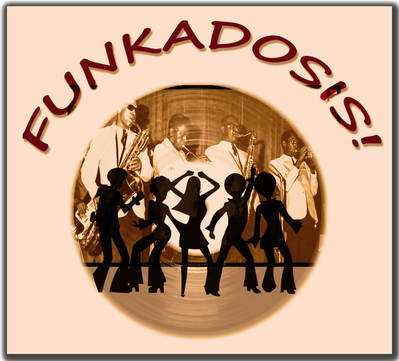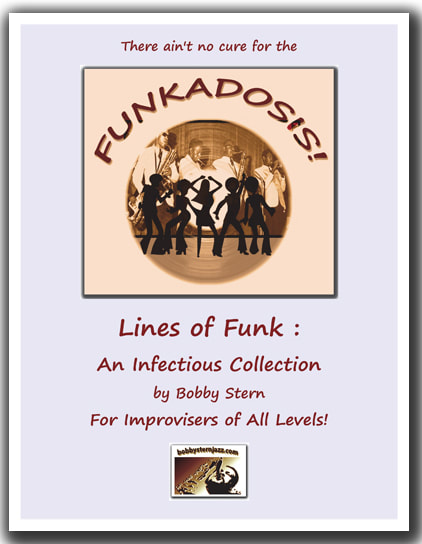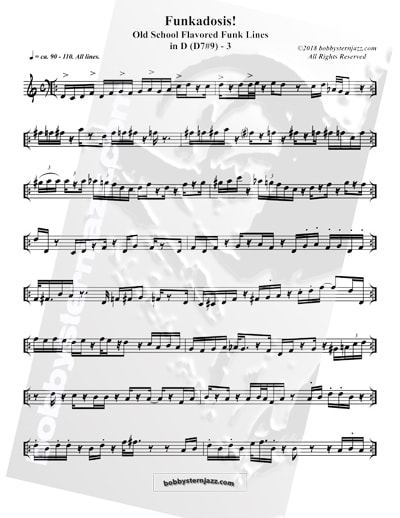 El yambu no se vacuna
El yambu no se vacuna
Son,” he informed me, “according to our diagnosis, you've got an acute case of ...the Funkadosis!”
As this came totally unexpected, I was naturally in somewhat of a state of shock; especially since he had called me “son” - he was young enough to be my son.
"You can relax!" he ordered. "It won't kill ya! You should be aware, however, that unlike neurosis, psychosis, halitosis or B.Osis, ...there ain't no cure for the Funkadosis!”
"...dosis!"
"Yeah, that!”
"Well, judging from your prognosis, you contracted the Funkadosis by osmosis! You see, it's in the air – it's everywhere (it's everywhere ...it's everywhere ...)!”
"In fact,” he continued, “99.9% of all humanity is born with the Funkadosis gene, which stays dormant until stimulated through the aural openings by, among other things, vibrosis funkosis, precipitating a mutational metamorphosis, the results of which are similar to those of narcosis and hypnosis.”
"I dunnosis," I pondered " ...but it sounds to me that what you're saying is … this so called Funkadosis can actually contribute to moveosis / grooveosis involuntariosis - from your head down to your toesis – in which case I guess I'd better just stop and smell the rosis”.
"I supposis! Or, in the case of extreme groovosis stankosis, you'll definitely wanna hold your nosis,” he added.
While I was aware that it was introduced to the world at large in the mid 1960's by "the Godfather of Soul", James Brown; I subsequently discovered that he himself caught the bug from contact with New Orleans musicians in his band, who themselves were, no doubt, shaped by that city's unique and funky musical culture.
One of New Orleans funk's major influences and innovators was pianist Professor Longhair (born Henry Roeland Byrd) who is acknowledged as a funk pioneer due to his incorporation of Afro-Cuban clave (West African based rhythmic "key pattern") and the resulting effect it had on New Orleans Rhythm & Blues (R&B) of the 1950's and beyond.
The graphic below is of a basic Afro-Cuban 3-2 "son clave" (it becomes 2-3 if started on the third beat of the measure). While it is shown here as a single measure cell in 4/4 & 12/8 (as are the lines throughout the book - see below), it is often written as a 2 bar pattern in cut time.
Whereas in traditional Afro-Cuban music, the clave pattern is virtually always strictly adhered to as a guide, funk patterns, on the other hand - while similar in length - tend to have a more implied, looser time-line while always maintaining a strong "groove" feel.
Regarding New Orleans and its place as a major commercial port with its close proximity to the Gulf of Mexico, as well as the undeniable Afro-Caribbean cultural influence on the city in general, it's hardly a wonder that the clave to funk metamorphosis, as with jazz itself, was a home grown New Orleans phenomenon.
This was evidenced by early jazz composer / pianist and New Orleans native Jelly Roll Morton's mention of the "Spanish Tinge" (with which he meant Afro-Latin, and not Spanish musical influence), already in the first decades of the 20th century.
Broken down into three sub-categories, and organized by key, they include:
- Classic "Old School" Funk Lines
- 12/8 Shuffle Funk Lines
- Jazz Fusion Funk Line
A particular line might fall under the heading of more than one of these categories.
Ex. 1
An example of a 4 bar "old school" funk riff / pattern w/ bass. The bass line simulates a 3-2 clave shape in bar 1, deviates in bar 2, returns to it in bar 3 and does its own thing again in bar 4.
Some more "old school", this time in a 2 bar pattern.
In figures throughout the book, such as in the 12/8 line below, which begin with a 32nd note followed by a dotted 16th, the 32nd note acts as a grace note, played directly on the beat. This common device is found in many styles of popular music, adding an expressive, percussive effect to those parts of the line.
It's found on the first beat of measure #1 (below), as well as all 4 downbeats of measure #.2
Although no chord changes are given, the approximate harmonic environment throughout might best be determined as a dominant 7#9, with Dorian, Mixolydian, Blues or Gmin6 being the most common scale colors; with Altered and Diminished thrown in with some of the Fusion Funk lines.
One thing to remember - that unlike neurosis, psychosis, halitosis or B.Osis, ...there ain't no cure for the Funkadosis!
B. Stern









 RSS Feed
RSS Feed









